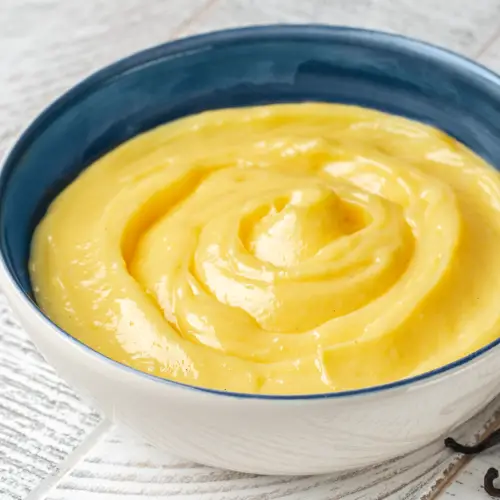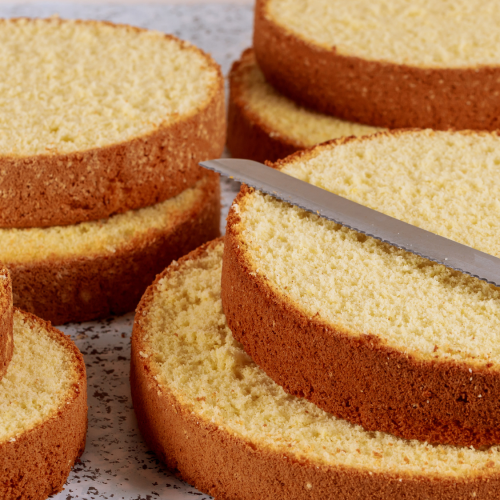table of contents
A very popular question is how to make sourdough starter at home. Making Sourdough at home is pretty simple because very few ingredients are needed: water, Flour, and Air! Let me explain how to make sourdough at home… easily!
It is often recommended to use a starter, an ingredient (such as fruit pulp, white yogurt, or honey) capable of triggering fermentation. Still, you risk introducing many bacteria that could make our yeast too sour.
On the contrary, we will see how to use only flour (but of good quality) to start our yeast. If flour is already available, all the substances (such as sugars, proteins, and mineral salts) must initiate a “healthy” fermentation.
Yes, the real starting point is to create a small community of yeasts and bacteria, which will become larger daily!
The time needed to bring the Sourdough starter to proper maturity is about 15 days. Still, it will depend on many factors:
- The flour used
- The temperature in your kitchen
- Even the microorganisms present in the air of your home
So don’t worry; if your sourdough starter doesn’t entirely respect the schedule, we’ll give it… Maybe it will be lazier or more vigorous than your friends’ one!
Before you start, consider the main fermentation methods: sourdough vs yeast, Levain and Biga.
HERE ‘S HOW TO MAKE SOURDOUGH STARTER AT HOME
Day 1
The essential step is to capture the yeast and bacteria in the air and “invite” them to interact with a world made for them, precisely the dough from which we will start. It contains everything these microorganisms need: food and water!
Knead then;
- 150 grams of Wholemeal or Semi-Wholemeal Flour
- 75 gr. of Plain Water (better if bottled)
- 1 gram of Salt
Once all the ingredients have been mixed, place the dough in a clean jar, cover it with gauze or paper towels held by a rubber band, and let it ferment for 24/36 hours at 25°C.
In this first phase, you will not observe any dough growth. Still, inside it will be formed the first population of yeasts and bacteria used to start the future fermentation.
This is what the first sourdough starter looks like

From Day 2 to Day 4
After 24/36 hours, you will already notice the first signs of fermentation: the volume will not have increased much (at most about 1/2 times the initial volume), but there will be many bubbles on the surface of the dough, and you will already notice a characteristic smell of yeast (a bit spicy yet)

Once ready, remove the surface crust and take the middle part of the yeast. Weigh out the amount you want to refresh (I recommend carrying at least 200gr of yeast daily) and then knead it with:
- Flour: Equal weight of yeast
- Water: 43% of the flour’s weight
For example, if you want to refresh 200gr of starter, you will have to knead it with:
- 200gr of flour
- 86gr of cold water
I recommend you continue to use Wholemeal flour in this second refreshment and use good quality Bread Flour (ensuring the protein content is around 14%) for all subsequent refreshments.
Knead everything, put the dough in a container (maybe a measuring jug to follow the yeast development better), cover it with paper, and let it rest for at least 48 hours at 25°C. At the end of this period, you will already notice a slight dough growth (about 1.5 times its initial volume).
From now on, you will notice that after each refresh, the sourdough starter grows more and more after 24 hours, doubling (and more) on the fourth day.
If your starter is not so “strong,” don’t panic… It may just need a little more time!
Days 5, 6, 7
As you did on the previous days, repeat the refreshment and keep the sourdough starter in the pot at about 25°C (77°F) until it triples in volume within 20-24 hours.
At this point, you are already halfway there: the flora of yeast and bacteria is almost formed. It will need to stabilize over the next few days until it finds its balance!
On Days 8, 9, 10…, and 15
Repeat the feeding process daily (in the same proportions described above) as soon as you see the yeast triple its initial volume. After each refresh, keep it at around 25°C (77°F).
You will notice that your yeast will triple its initial volume in less time during these days until it takes only 6/8 hours.
At this point, the Sourdough starter is finally ready, and you can store it in water and use it to prepare your recipes!
Not sure if sourdough is the right choice? Read our full starters comparison.
your QUESTIONS ABOUT SOURDOUGH STARTER
In this case, the Sourdough will take longer to double the volume. Let it ferment for as long as necessary, and then continue with the usual refreshments.
If the Sourdough does not rise, there are many possible causes. First, you can refresh it by decreasing the amount of flour compared to the yeast (800gr of flour for 1kg of yeast) and add 1gr of malt powder for each kg of flour.
It means that the Sourdough is not yet mature. Continue daily refreshments until the yeast grows to between 3.5 and 4 times its initial volume in 7/8 hours.
The Sourdough will be ready when it grows to between 3.5 and 4 times its initial volume in 7/8 hours.
Once ready, you can decide to keep the Sourdough at room temperature and refresh it every day, or keep it in the fridge and refresh it every 5/7 days. How to Store Sourdough
Wholemeal or semi-wholemeal flours are suitable to start the preparation of Sourdough and trigger the first fermentation. After that, I recommend using a high-quality Bread Flour with content of proteins greater than 14% (or W 360 if you live in Europe).
Of course, you can use both gluten-free flour and flour mixes to make Sourdough. For example, you can use rice flour and rice starch together!
No, it is essential to leave the Sourdough in an oxygenated environment to promote new yeast cells and their interactions with the air’s bacteria. Simply cover the bowl with a cloth or some paper
High summer temperature makes it more challenging to control yeast acidity because it favors its development.
On the other hand, cold winter temperatures can slow down fermentation.
The best solution is to create a fermentation environment of around 19 degrees (66°F) (+/- 2°C).
No, a bath is only required when refreshing the mature Sourdough.
There is always a part of the previous dough discarded (such as the crust). However, I suggest not to use these parts, especially during the first weeks of preparation, because they can contain bacteria not tolerated by our body. This is not the case for the refreshments made when the Sourdough is ready and mature.
Here the waste parts can be dried first in the air and then in an oven at 100°C (212°F) for about 40/60 minutes and finally pulverized in a mixer. The resulting powder can be added to the bread and pizza doughs (about 10gr/kg of flour) to enhance the acidic note.
Most likely, the Sourdough has become too acidic. In this case, you can rebalance it by refreshing it with a yeast: flour ratio of 1:1.2 (1kg yeast and 1.2kg flour).
Yes, the real clock in Sourdough’s preparation is the Sourdough itself. If this gets to the proper rise earlier than expected, go ahead and refresh it.
Yes. Yogurt, honey, or fermented fruit pulp are very common starters to begin sourdough preparation. I personally do not recommend yogurt and honey because they create unstable acidity. I would instead recommend using fermented fruit pulp or simple whole wheat/semi whole wheat flour.
In this case, throw away the Sourdough and sterilize all utensils used before starting the preparation all over again.

























48 comments about “Come fare il lievito madre in casa”
Buonasera vorrei preparare il lievito madre seguendo la sua ricetta ma ho alcune domande:
1) perché si aggiunge il sale la prima volta?
2) si può creare un LM con la semola ( ne ho una biologica) o semola rimacinata? Se sì quante proteine deve avere la farina? Se cambio la farina al terzo rinfresco potrei compromettere il risultato finale?
3) Se aggiungo alla farina germe di grano biologico posso creare il LM? Se sì quanta percentuale occorre?
Complimenti per il sito e la conoscenza che è molto alta leggendo il blog, complimenti.
Ciao Luca,
sono molto contento che Biancolievito ti piaccia!
Per rispondere alle tue domande, il sale (in piccolissime percentuali) è un modo per tamponare l’acidità prodotto dal lievito durante la prima fermentazione. Se noti, è il solo stadio in cui viene inserito.
Per quanto riguarda la farina di semola o il germe di grano, sono entrambi ingredienti che tendono molto ad acidificare, per cui ti consiglio di preparare il lievito con un’ottima farina raffinata e ricca di proteine, e poi di usare la semola o il germe per la preparazione delle ricette!
A presto!
Ciao ho iniziato da 6 gg e al primo rinfresco è andato tutto ok. dal secondo rinfresco il composto è diventato molto appiccicoso al limite della liquidità. Per riequilibrarlo non ho fatto bagnettoma aggiunto solo della farina senza zuccheri o altro. Domani rinfrescherò ma presumo di ritrovare stessa consistenza. Cosa fare?
Ciao Vittorio,
se stai iniziando a preparare il lievito madre NON devi fare nessun bagnetto né aggiungere zuccheri.
Il bagnetto si usa per conservare il Lievito Madre, una volta che sarà maturo e pronto!
Se vedi che il lievito tende a diventare appiccicoso (molto probabilmente la temperatura a cui lo conservi è troppo alta), al rinfresco successivo, aggiungi il 20% in più di farina (1kg di lievito e 1.2kg di farina)
A presto
Grazie avevo guardato il post e tutto adesso è ok. Ieri in 24h è cresciuto di 2 volte e mezza. Oggi probabilmente in 8 h arriverà a tre volte la massa. E’ arrivato a maturazione e posso procedere allo step successivo (conservazione) ? ho iniziato 10gg fa da zero
Ciao Vittorio,
sì una volta che il lievito è maturo, potrai passare alla fase di conservazione.
Dopo il bagnetto ed il rinfresco (Ecco come Conservare il Lievito Madre), potrai conservarlo per 24ore a temp ambiente, oppure mettere in frigorifero e conservare fino a 5giorni!
A presto
Buonasera, ho fatto il lievito madre e sono arrivato alla “fase finale” dove il lievito mi è piú che triplicato in 8 ore….
È dal 16 marzo che ho iniziato a farlo…
La domanda è:”posso giá usarlo per fare il pane o la pizza?”
Una mia amica mi ha detto che deve passare 1 mese da quando ho iniziato, è vero?
Io stasera ho fatto l’impasto della pizza che dovrei fare domani sera, vorrei sapere se devo buttare tutto.
Grazie mille.
Ciao Luca,
se il tuo lievito ti triplica in meno di 8 ore, significa che è pronto; male che vada potrebbe essere un pò debole.
Fai un paio di rinfreschi la prossima volta, prima di usarlo nella ricetta!
A presto
Buonasera.
Sono passati 10giorni da quando ho iniziato e negli ultimi due( oggi è il terzo giorno) l’ho rinfresco ogni 12 ore sempre con il 150g di farina, 150g di lievito madre e 50g d’acqua.
L’ultimo rinfresco effettuato alle 13:10 ho notato, fotografandolo ogni ora, che ha triplicato in 4 ore.
Ora mi chiedo se il lievito madre è pronto?
Ho letto che gli alveoli devono avere la forma “allungata” mentre i miei sono più circolari.
Va bene comunque?
Gli alveoli le prime due ore erano poco visibili ma con il passare del tempo sono diventati più visibili. È normale?
Ciao Luca,
ottimo.. se il lievito ti triplica in 4 ore è pronto!
Gli alveoli piccoli e circolari potrebbero denotare un’acidità eccissiva, ma la puoi aggiustare con qualche rinfresco 1:1.2 (1kg di lievito e 1.2kg di farina)
A presto!